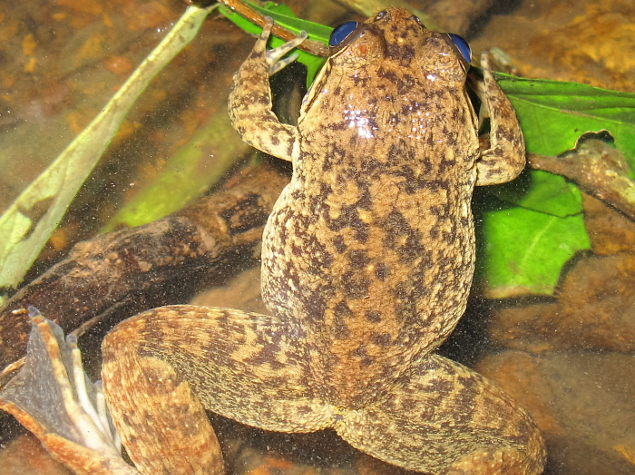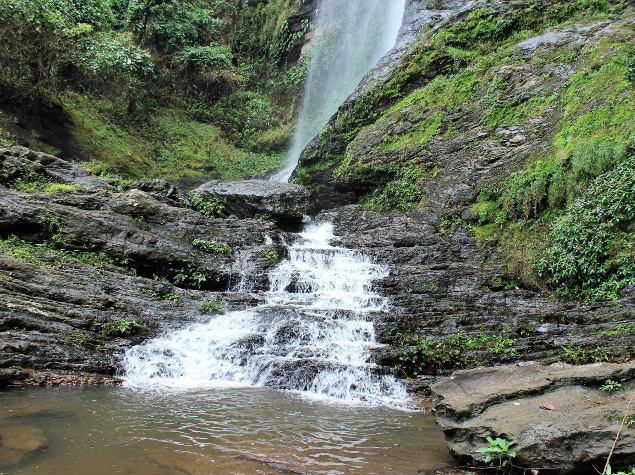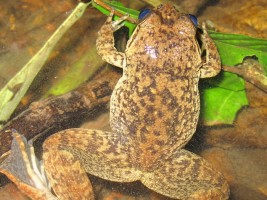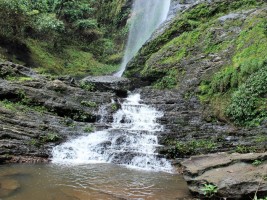Scaling-up conservation efforts for the long-term protection of the critically endangered Togo slippery frog (Conraua derooi) in Ghana

The Togo slippery frog (Conraua derooi) is a rare species that lives in one single site of less than 10 square kilometres and the extent of its forest habitat is declining. It is ranked among the top 100 most genetically distinct and globally endangered amphibians in the world. Recent population estimates reveal a steady decline from 335 in 2013 to less than 226 individuals in a 2016 estimate.
Habitat degradation and hunting are driving declines in the frog’s population. Habitat degradation is caused by the uncontrolled extraction of water from the village stream (which is the only habitat of the last remaining population of the species) leading to reduced quantity and quality of stream water needed for successful tadpole development. In some instance tadpoles are accidentally removed and/or killed from the stream during water extraction. Hunting on the other hand is done by small school children mostly as an after-school activity.
The objective of this project is to save the last remaining population of the critically endangered Togo slippery frog from extinction. Two objectives will be targeted:
- Improve community water supply by introducing rainwater harvesting and storage technology that eliminates their dependence on stream water. Existing roofing systems of public buildings will be used as the rain water collection areas. Five large reservoirs will be acquired and installed to serve as the main storage facilities. Water quality will be routinely assessed and water treatment conducted whenever necessary. In addition, education and training will be provided to enable individual households to setup their own water harvesting system using basic household items.
- Enhance the adoption of conservation sensitive behaviours by establishing an innovative conservation after-school program for school children. Computer based software application that teaches pupils about the value of keeping the integrity of the ecosystem, the impact of poaching and pollution will be used. Documentaries and conservation movies will be broadcasted as well. Another part is an outdoor adventure program which will involve various activities within the protected area.
Final report summary (November 2019):
Following a concertation with villagers and engineers, the water collection and reservoirs system has been replaced by a mechanized pump. The planned reservoirs would not stock enough water over the dry season (4 months). An ecotourism project has been set up simultaneously to pay for the maintenance of the water system and has already received 3,000 people in one year.
The NGO also intervened in two schools and during a meeting with 500 pupils. Finally, some students were able to discover a nearby protected area and learn how to use a GPS and camera traps.



